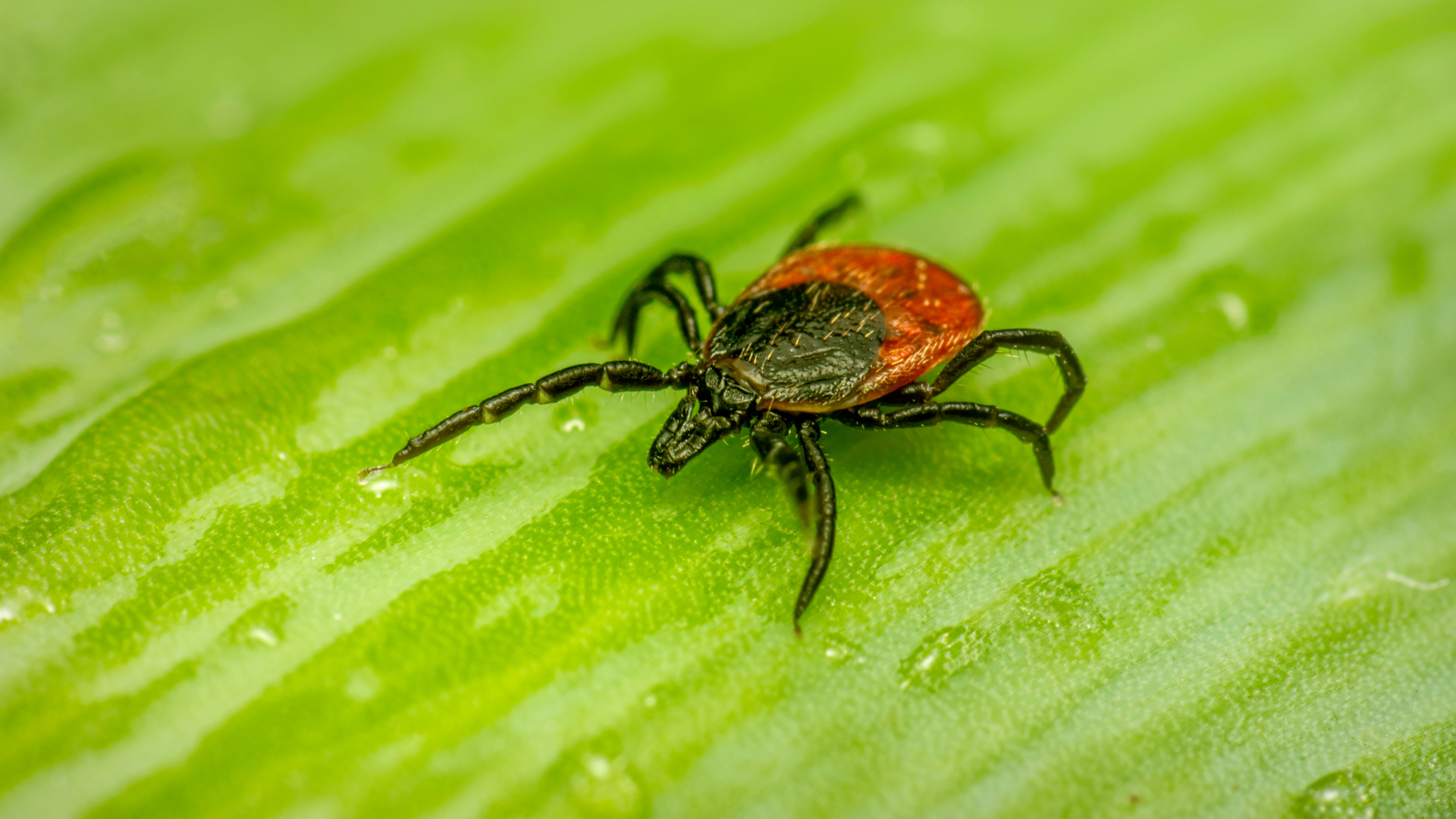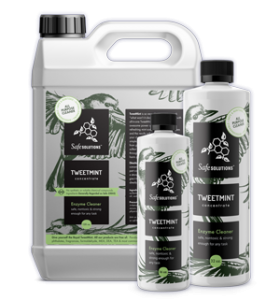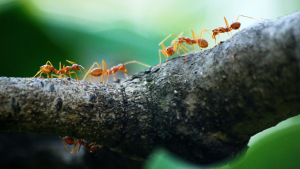2023 is supposed to be the worst tick season of any year, so far. 2022 was a “bad tick year”, 2021 was a “bad tick year”, 2020 was a “bad tick year” and the few years preceding 2020 were all “bad tick years”. “Bad tick year” is a phrase that many people have been reading about in the news for several years now. The phrase, although becoming commonplace for health & environmental columnists to cite & repeat, does actually carry serious weight behind it, even though it may seem overused. Longer, farther-reaching tick seasons have been on the rise and are becoming more intense each year.
One of the biggest drivers behind the rise in ticks is Climate Change. The milder winters transition into longer, hotter summers (each summer has been hotter on record than the one preceding it), allowing for a tick population rebound and longer breeding times. To aid in tick migration, rodents (especially mice) and other mammals, are able to benefit from shorter winters and longer summers; spreading their reach into areas where humans live. Wild animals, sadly, are great at spreading ticks to people, yards, and pets.
The final piece of the tick-boom puzzle, would be the unrelenting urban & suburban expansion of humans. The continued practice of forest fragmentation, which is the act of decreasing forest size, cutting a larger forest into multiple smaller forests, and then building around them; has led to a rapid increase in tick exposure. Deer, major hosts for ticks, have much smaller habitats and in a fight for resources, have spread to many suburban lawns – bringing ticks right to your doorstep.
All of the above factors continue to be affecting the increased population drive of ticks – and there are no signs of any slow-down. It is important to learn & adopt natural & non-toxic tick control & prevention methods to keep yourself, loved ones, and pets safe through the new reality of more brutal tick seasons.
Below, we will discuss ways you can control ticks, reduce tick exposure, and learn more about their biology to better understand the pests we’re up against.
Table of Contents
Tick Species Identification
Tick Biology & Behavior
Removing Ticks
Pestisafe® Control Inside
Pestisafe® Control Outside
Final Thoughts
Tick Species Identification
There are many different diseases & parasites that ticks can carry, however, each tick species carries specific pathogens when compared to another tick species. Below is a graphic that contains some of the most common tick species in North America that feed on humans (all have been magnified for better viewing).
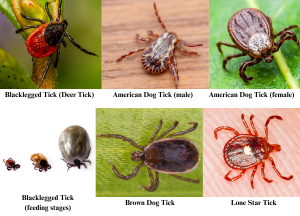
Each tick can host a wide variety of bacteria & diseases, as noted by the Centers for Disease Control and Prevention (CDC):
Blacklegged Tick: Borrelia burgdorferi and B. mayonii (which cause Lyme disease), Anaplasma phagocytophilum (anaplasmosis), B. miyamotoi disease (a form of relapsing fever), Ehrlichia muris eauclairensis (ehrlichiosis), Babesia microti (babesiosis), and Powassan virus (Powassan virus disease)
American Dog Tick: Francisella tularensis (tularemia) and Rickettsia rickettsii (Rocky Mountain spotted fever)
Brown Dog Tick: Rickettsia rickettsii (Rocky Mountain spotted fever)
Lone Star Tick: Ehrlichia chaffeensis and E. ewingii (which cause human ehrlichiosis), Francisella tularensis (tularemia), Heartland virus (Heartland virus disease), Bourbon virus (Bourbon virus disease), and Southern tick-associated rash illness (STARI)
There are more than 850 different species of ticks throughout the world. The above were selected due to their disease severity and common sightings.
Tick Biology & Behavior
Ticks are not insects, they actually belong to the class of arachnids. There are two different families ticks are divided into: hard ticks (Ixodidae) and soft ticks (Argasidae). Hard ticks’ backs are strong shields and they come with an apparent head. Soft ticks lack the shield-plate and instead are more leathery with no distinguished head.
All ticks follow a 4 stage life cycle as follows: egg, larva, nymph, adult. The nymph & adult stages both feed on animals & humans. Female hard ticks feed once and can lay 10,000 eggs per each feeding, while soft ticks typically feed multiple times per host and lay about 20 – 50 eggs after each meal. All types of ticks can swell to great sizes, ballooning to proportions well beyond their typical state (see the above Tick Identification Chart for reference).
Ticks feed on all types of animals: reptiles, birds, mammals, amphibians, and humans. They cannot fly, jump, hop, run, or move quickly in
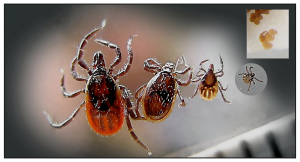
any way – ticks lie in wait for their prey with outstretched claws; grasping tightly to their new hosts if they come too close. Carbon dioxide, body odor, body heat, vibrations/movement, and even shadows are all methods ticks use to locate potential hosts. Some tick species can detect hosts from up to 18 feet away!
Nymph: nymphs are incredibly small (around 1/25 to 1/6 of an inch long). They climb grasses or plant stems to wait for passerby. They feed for several days and then leave their hosts to molt. Look for tiny dark specks on the body that do not rub off.
Adult: adults climb to the end of grass stalks or plant stems as well, waiting for vibrations or shadows to indicate new prey is near. They can wait months or even longer than a year for a single host to come by. When a host is detected nearby, ticks will also seek them out, rather than waiting.
Attachment & Feeding: adult female ticks will feed on one host for a few days to a week. Typically, ticks do not climb trees or other high places – but still exercise caution when hiking through thick branches. Ticks often climb onto hosts at points near the ground; shoes, ankles, or lower legs are all common access points. Ticks will climb higher and higher until they reach constrictive clothing or the head. On animals & pets, ticks will usually climb until they reach the head. Ticks are incredibly smart and know how to move undetected by their hosts, do not underestimate these parasites, as they follow blood flow under the skin and body heat for the perfect feeding area.
After finding a feeding area, ticks plunge their teeth (unnoticed) into their host. Their saliva is made up of over 400 proteins that interfere with blood-clotting, that increase blood flow, and destroy the host’s immune system response. At this point the feeding tick is lodged & locked into the host, do not attempt to pull off the tick; there is a special method to avoid beheading the tick, and losing the head under the skin; this method will be discussed in the Removing Ticks section below.
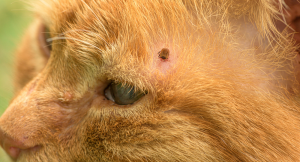
Typically is takes 36 – 48 hours of continuous feeding for a tick to transmit Lyme disease. As the tick feeds it engorges on blood from the host, and will reach a point where it needs to make more room for blood. The tick will “backwash” water and bodily fluids and dispense this “backwash” into their host, along with all the diseases & bacteria the tick is carrying.
Removing Ticks
After hiking, playing outside for long periods of time, or taking pets in & out; it is important to inspect closely for ticks. Forget modesty! Conduct a thorough check, and note that ticks will often hide behind ears, in the scalp, or along the nape of the neck to feed & hide. Ticks will also hide along the seams of underclothes, so it is important to inspect the groin area.
How to remove ticks with tweezers/forceps: take a pair of tweezers or forceps and pinch the tick as closely to the head as possible and gently, but firmly, pull the tick straight back. Do not heat or pinch the tick too hard as you could cause the tick to burst, dispensing any bacteria or disease into the open wound. Once the tick is removed, apply an antiseptic to the wound.
You can also invest in a special tick removal device.

It is important to place the tick in a vial or container filled with alcohol to preserve the tick. Submit the tick to your local health department for identification, as it is important to know the species to learn the associated diseases the tick may be carrying. For more on how to submit ticks for identification click to read this short article. The Author encourages anyone who finds ticks to submit them to their local health departments, as this greatly helps researchers to document tick migration and the spread of their associated diseases.
The best control for ticks on pets is Fleas & Ticks R Gone® shampoo which will remove ticks on contact.
Washing Dogs
Washing dogs with Fleas & Ticks R Gone® is straightforward and the first step is drawing warm water for the bath. The warm water will not only be comforting for your dog, but will also help to activate the enzymes in Fleas & Ticks R Gone® shampoo.
How much product is needed to get rid of ticks? Typically all you will need is 1-2 oz (2 – 4 tbsp), and this can be added to the bath water. It is recommended to first wet your dogs fur and then use 0.5 – 2 oz (15 – 60 ml) of shampoo to form a lather. The shampoo amounts vary on the size of dog, thickness of fur, length of coat etc.
*Quick tip* start washing around your dogs ears and the neck area. Ticks, and other pests, will flee and try to hide in their ears to get away from the soapy water. Start in this area to block their escape.
Once you have thoroughly shampooed your dog it is important to rinse them off, and dry their wet fur.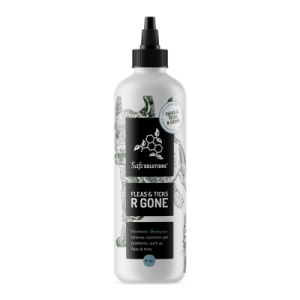
Washing Cats
Cats can be a little trickier to wash, but luckily their are some methods that can make it easier.
It is important to note, that upon welcoming a new kitten (or even a puppy) it is vital to handle, groom, and introduce water/bathing to the kitten over the first few months to a year. This will help train the cat or dog to not be afraid of grooming/bathing and make the washing process much easier, if they ever sadly become exposed to fleas or other pests.
If your cat handles baths without (or minor) complaint, they can be washed according to the above method for dogs.
For more stubborn pets, there is the “burrito method”. Take a towel and wet it with warm water. Next, take some Fleas & Ticks R Gone® and form a lather in the towel. Take your cat and fold/wrap the towel around them, forming a “cat-burrito”. Massage the cat with the towel and make sure to rub the shampoo lather all over to make sure it can remove the ticks.
Pestisafe® Control Inside
After removing ticks from any and all occupants, attention should be turned toward making sure all ticks are removed & prevented from re-entering the home.
As always, we will walk through each step of the IPM pyramid and create a complete Intelligent Pest Management® plan.
Cultural Control:
- Ticks prefer still, damp, shady areas; so make sure to turn on the lights, dehumidifiers, and fans.
- Wash dog & pet bedding frequently or the areas they prefer to lie and sleep in.
- Vacuum daily, paying special attention to these areas: under the edges of rugs, under furniture, in cracks around baseboards, window and door frames, and in dog boxes.
- Clean or Mop using TweetMint® Enzyme Cleaner at 1 oz (2 tbsp) per quart of water. Steam cleaning is also a preferred method.
- Frequently launder clothing & bedding (especially clothes that have been used on hikes) with TweetMint® Enzyme Cleaner using 1 – 2 oz (2 – 4 tbsp) per load in a high-efficiency washing machine. Use high heat in the dryer.
Physical Control:
- Caulk & seal all tiny spaces, cracks & crevices to eliminate the areas where ticks hide.
- Lightly dust floors with food-grade diatomaceous earth (DE), baking soda, baby powder, or talcum powder. Let set overnight and vacuum the following day.
- Install screens and inspect current screens to make sure they are not damaged.
Biological Control:
There are a lack of biological controls for inside the home, however, there are some for outside – more on this in the section Pestisafe® Control Outside.
Spray any ticks with TweetMint® Enzyme Cleaner or Not Nice To Bugs® solution using 1 – 2 oz (2 – 4 tbsp) per quart of water.
Pesticide control is often useless & dangerous, as it is extremely hard to control ticks using chemicals. Ticks have incredible chemical/poison resistance.
Pestisafe® Control Outside
Cultural Control:
- Mow and keep all grasses 3″ or less – this will help to reduce humidity (promote tick desiccation) and leave ticks more vulnerable to predators.
- Keep shrubs & brush cut short – especially where occupants hang out or play around.
- Remove litter & debris. Remove all underbrush and shrubs.
- Use tick flags to inspect areas for ticks before outdoor fun. You can take a white flag and drag/sweep it along the ground. Then check the flag to see if any ticks latched onto it.
- Keep stray dogs, cats, and wildlife out of yards – all of these animals help ticks migrate to your yard.
- Remember shaded areas contain the most ticks.
Physical Control:
- Caulk & seal all cracks & crevices along the home.
- Inspect screens to ensure there are no cracks or damage to them.
- Consider fencing in your yard to prevent stray & wild animals from getting in.
Biological Control:
A pair of Guinea hens can roam free and will greatly diminish tick populations. Spiders, ants, wasps, fungi, nematodes, and other birds regularly feed on ticks.
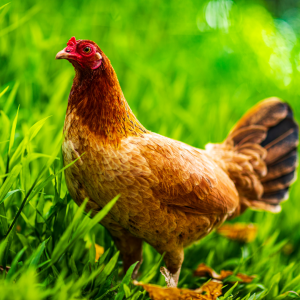
To help promote these predators, it is important to not conduct pesticide treatments or mosquito sprays – they are ineffective against pests and do more harm to natural, beneficial predators.
Pestisafe® Control:
You can take a hose-end sprayer and spray TweetMint® Enzyme Cleaner or Not Nice To Bugs® in different areas of the lawn where you suspect ticks to be. *NOTE* shaded areas are the places most likely to have ticks, focus on spraying these areas rather than the entire yard.
Final Thoughts
Ticks are, quite literally, living cesspools for all manner of dangerous bacteria & disease. They are one of the most important pests to control & prevent for both humans & animals.
Ticks are incredibly hardy & tough pests – pesticides & chemicals will not work on them; to use poisons is irresponsible & futile. Even using TweetMint®, which ticks cannot build a resistance to, will work but can take up to 2 minutes for control. This is because ticks have that shield shell, discussed earlier in the section, Tick Biology & Behavior.
For more information, read the entire chapter here @ www.thebestcontrol2.com.
For more sustainable solutions visit www.safesolutions.com
If you enjoyed this article and would like to read more, check out our Bug Blog for more! Follow our Facebook @safesolutions and our Instagram @safesolutions @tweetmint so you won’t miss the next article.
-Gage

